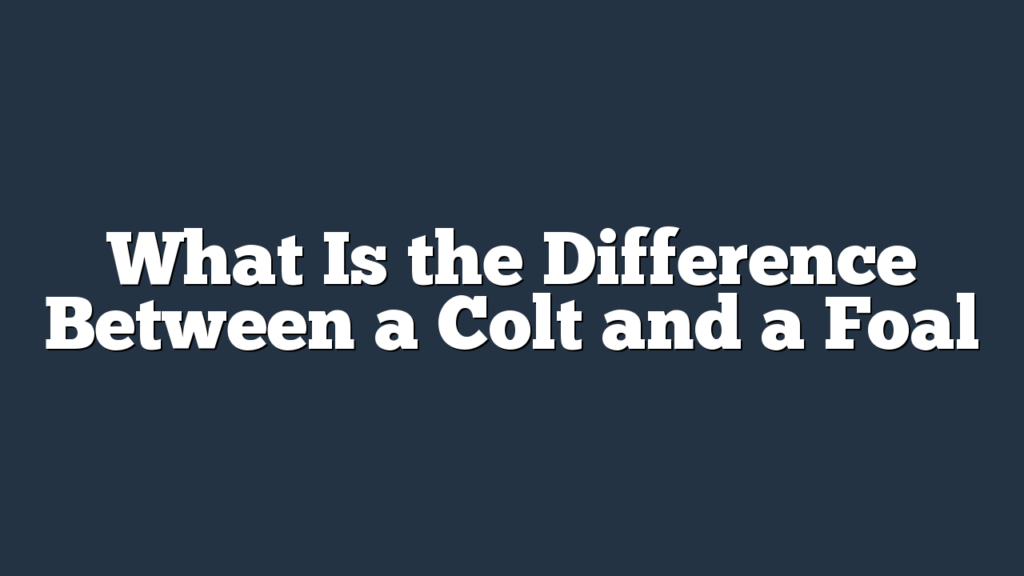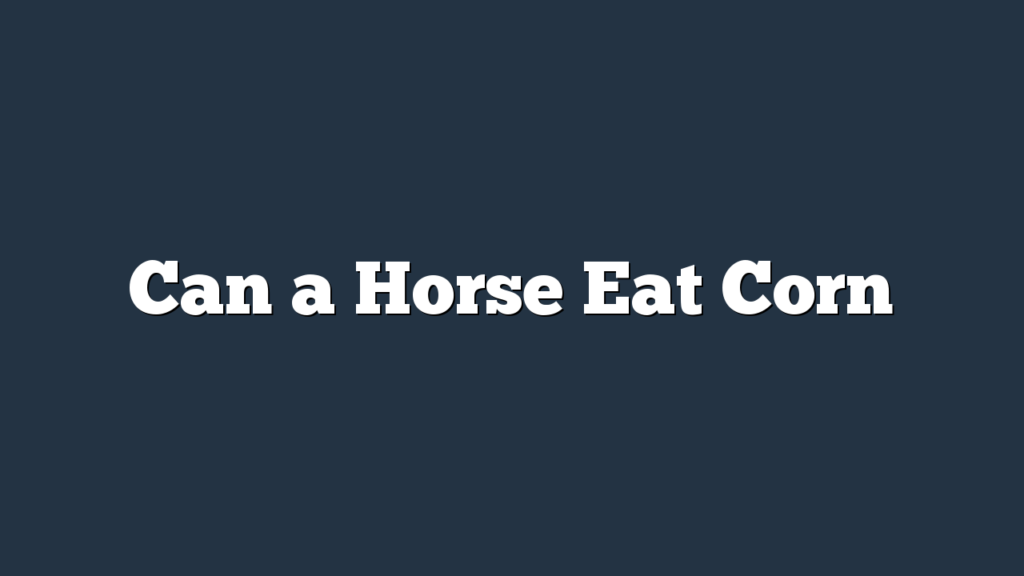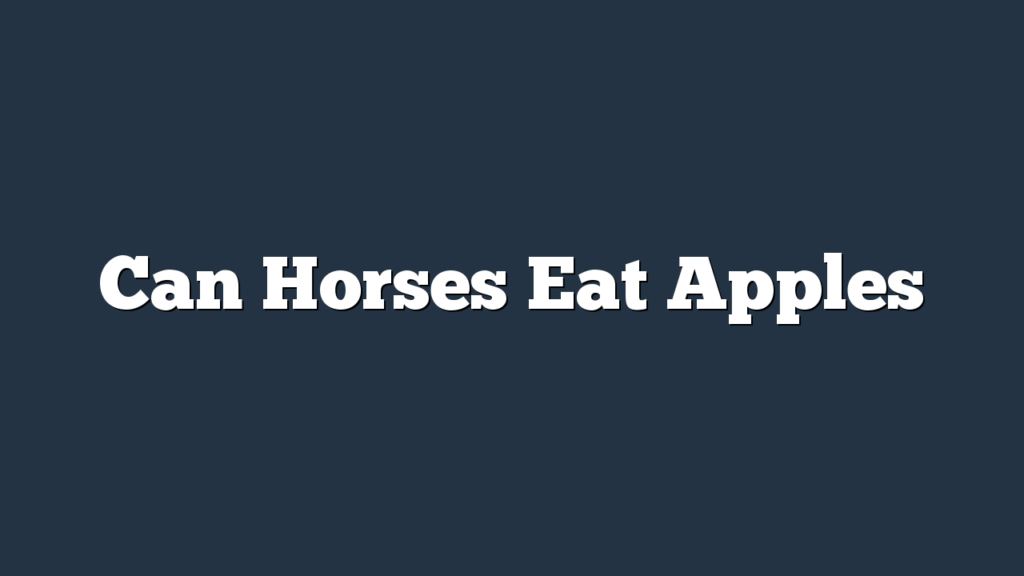Do you know the difference between a colt and a foal? In this article, we’ll break it down for you.
A colt refers to a young male horse, while a foal is a general term for a young horse of either gender.
Understanding their age range, physical characteristics, and developmental milestones is essential to properly training and handling them.
So, let’s dive in and explore the distinctions between these two equine terms.
Definition of a Colt
A Colt is a male horse under the age of four. When it comes to the colt weaning process, it’s essential to consider the foal nutrition requirements. During this phase, the colt transitions from relying solely on its mother’s milk to consuming solid food. This weaning process is crucial for the colt’s growth and development.
Foal nutrition requirements play a vital role in ensuring the colt’s health and well-being. As the colt starts to eat solid food, it’s important to provide a balanced diet that meets its nutritional needs. This includes providing high-quality forage, such as hay or pasture, which supplies essential nutrients like carbohydrates, protein, and minerals.
Additionally, the colt may require supplemental feed, such as grain or pellets, to meet its energy requirements during this growth phase. These feeds should be specifically formulated for young horses to provide the necessary vitamins and minerals for optimal development.
It is important to monitor the colt’s weight and body condition during the weaning process to ensure it’s receiving adequate nutrition. Regular veterinary check-ups can help assess the colt’s growth and make any necessary adjustments to its diet.
Definition of a Foal
To understand the difference between a colt and a foal, it’s important to define what a foal is in relation to its mother’s milk and nutritional needs. A foal is a newborn horse that’s still nursing from its mother. During the first few months of life, a foal relies solely on its mother’s milk for nutrition. This milk is rich in essential nutrients and antibodies that help the foal develop a strong immune system.
Here are three key points to understand about foal nutrition:
-
Colostrum: In the first few hours after birth, a foal consumes colostrum, which is the mare’s first milk. Colostrum is crucial for the foal’s immune system development, as it contains high levels of antibodies that protect against diseases.
-
Transitioning to solid food: As the foal grows, it gradually starts to eat solid food alongside nursing. This transition typically begins around two to four months of age when the foal starts nibbling on grass, hay, or grain.
-
Nutrient requirements: Foals have specific nutritional needs that differ from adult horses. They require a balanced diet to support their rapid growth and development. Proper nutrition is essential for strong bones, muscle growth, and a healthy immune system.
Understanding foal nutrition is important for ensuring their proper growth and development. By providing the right nutrients and monitoring their diet, you can help your foal grow into a healthy and thriving horse.
When it comes to colt behavior and temperament, foals can display a wide range of personalities. Just like human children, each foal is unique and may have its own quirks and characteristics. Some foals are bold and outgoing, while others may be more timid and shy. This individuality is influenced by genetics, early experiences, and their environment. As the foal grows and matures, its behavior and temperament may continue to evolve. It’s important to handle and socialize foals from a young age to ensure they develop into well-adjusted and trainable horses.
Age Range for Colts and Foals
As your foal grows and develops, it will eventually reach a stage where it transitions from being a foal to being a colt or filly. The age range for colts and foals can vary, but generally speaking, a foal is considered to be from birth until it reaches one year old. During this time, the foal goes through rapid growth and development, learning how to walk, run, and interact with its surroundings.
Once a foal reaches the age of one, it is typically referred to as a colt if it is male or a filly if it is female. The age range for colts can extend from one year old until they reach the age of four. During this time, colts continue to grow and mature, both physically and mentally. They begin to develop their own unique personalities and characteristics.
On the other hand, the age range for foals extends from birth until one year old. This is the time when they are most vulnerable and reliant on their mothers for nourishment and protection. Foals grow rapidly during this period and go through various stages of development, from learning to stand and walk to becoming more independent and exploring their surroundings.
Here is a table summarizing the age range for colts and foals:
| Age Range | Colts | Foals |
|---|---|---|
| Birth – 1 yr | 1 – 4 yrs | Birth – 1 yr |
Physical Characteristics of Colts
Continuing from the previous subtopic, let’s explore the physical characteristics that distinguish colts. As colts progress through their developmental stages, they exhibit certain features that set them apart from other horses. Here are some key physical characteristics to look out for:
-
Muscle development: Colts start to develop more defined muscles as they grow older. Their bodies become more toned and their muscles become more prominent, especially in their hindquarters and shoulders.
-
Height: Colts tend to be taller than foals, as they continue to grow in height during their early years. Their legs also become longer, allowing them to move with more grace and agility.
-
Coat color: While foals often have a soft and fuzzy coat, colts develop a sleek and shiny coat as they mature. The color of their coat may also change, as they go through different stages of shedding and growth.
In addition to these physical characteristics, colts also display distinct behavior patterns. As they grow older, they become more independent and start to assert their dominance within the herd. They may exhibit playful and curious behavior, as they explore their surroundings and interact with other horses.
Understanding the physical characteristics and behavior patterns of colts can help horse owners and enthusiasts better care for and train these young horses.
Physical Characteristics of Foals
When observing foals, you can notice distinctive physical characteristics that set them apart from colts. Foals are the young offspring of horses, typically less than a year old. They undergo significant physical growth during their first year of life. At birth, foals have a soft and fuzzy coat that gradually becomes sleeker and thicker as they mature. Their legs appear long in proportion to their bodies, giving them a slightly awkward and gangly appearance. As they grow, their bodies become more compact and muscular, and their limbs become more proportionate.
In terms of behavioral development, foals are curious and inquisitive, often exploring their surroundings with great enthusiasm. They may exhibit playful behavior, running and jumping around in the pasture. Foals also learn important social skills by interacting with their mothers and other members of the herd. They observe and mimic their mother’s behaviors, such as grazing and grooming, gradually developing the necessary skills for survival.
Developmental Milestones for Colts
Now let’s talk about the developmental milestones for colts.
As a colt, your early growth stages are crucial for building a strong foundation.
During this time, you’ll learn to walk and gain coordination, which are essential skills for your future development.
Early Growth Stages
Observe the early growth stages and developmental milestones of a colt, as it progresses from a foal to a young horse.
During this crucial period, two main factors play a significant role in shaping the colt’s growth and development: early nutrition and behavioral differences.
-
Early nutrition: A colt’s diet should consist of high-quality hay, fresh water, and balanced grain to support its rapid growth and development. Proper nutrition ensures strong bones, healthy muscles, and overall vitality.
-
Behavioral differences: As a colt grows, it starts exhibiting unique behaviors, such as increased curiosity, playfulness, and independence. These behaviors are essential for the colt’s socialization and adaptation to its environment.
Understanding these early growth stages and milestones is vital in providing the necessary care and support for a colt’s healthy development. By ensuring proper nutrition and recognizing behavioral differences, you can help the colt thrive and grow into a strong and well-adjusted young horse.
Learning to Walk
During the early growth stages, the acquisition of a colt’s ability to walk is a crucial developmental milestone. Just like human babies, colts also go through a process of learning to crawl before taking their first steps. Learning to crawl helps them develop the necessary coordination and strength in their limbs.
As they gain confidence, they’ll eventually attempt their first steps. These initial steps may be wobbly and unsteady, but with practice, the colt’s muscles will strengthen, and their gait will become more stable. It’s essential for colts to master walking as it lays the foundation for other physical activities such as running and jumping.
The process of learning to walk is an exciting and significant milestone in a colt’s early development.
Developmental Milestones for Foals
As a foal develops, it reaches important milestones in its growth and development. These milestones are crucial for the foal’s overall well-being and future development. Here are some key milestones that foals typically go through:
-
Standing and nursing: Within an hour of being born, a foal should be able to stand on its own and nurse from its mother. This is essential for proper foal nutrition and bonding with the mare.
-
Exploration and socialization: Foals are naturally curious and will start exploring their surroundings within a few hours of birth. They’ll also begin to interact with other foals and horses, learning important social skills.
-
Weaning: Around four to six months of age, foals are usually weaned from their mother’s milk and introduced to solid food. This transition is vital for their nutritional needs and independence.
Understanding these milestones can help you monitor your foal’s development and ensure that they’re progressing as expected. Additionally, observing colt behavior during these milestones can provide valuable insights into their personality and future potential.
Training and Handling Colts
Now let’s talk about training and handling colts.
When it comes to foal socialization techniques, it’s important to expose them to various stimuli and gentle interactions to build their confidence.
As for colt halter breaking, it involves teaching them to accept and respond to pressure, leading them to become more manageable and easier to handle in the future.
Foal Socialization Techniques
To effectively train and handle colts, it’s important to establish a strong foundation of foal socialization techniques. Here are some key techniques to consider:
-
Imprint Training: This involves introducing the foal to various stimuli, such as touching their body, handling their feet, and exposing them to different environments. It helps them become accustomed to human touch and handling from an early age.
-
Desensitization: This technique involves gradually exposing the foal to different objects, sounds, and situations to reduce fear and anxiety. It helps them develop confidence and adaptability.
-
Leading and Groundwork: Teaching the foal to lead and respond to cues on the ground is crucial for their safety and future training. It includes teaching them to yield to pressure, walk, trot, stop, and back up.
Colt Halter Breaking
Establish a strong foundation of foal socialization techniques by implementing colt halter breaking methods for training and handling. Colt training techniques are crucial in shaping a young horse’s behavior and preparing them for future training. By halter breaking a colt, you are teaching them to accept the halter, lead, and respond to basic commands. This process helps establish trust and respect between the colt and the handler.
Here are some foal care tips for successful colt halter breaking:
| Step | Description |
|---|---|
| 1 | Introduce the halter gradually, allowing the colt to sniff and explore it. |
| 2 | Gently place the halter on the colt’s head, ensuring a proper fit. |
| 3 | Begin leading exercises in a safe and enclosed area, using gentle pressure and release. |
| 4 | Practice patience and consistency, rewarding the colt for desired behavior. |
| 5 | Gradually introduce new environments and obstacles to further develop the colt’s confidence and trust. |
Training and Handling Foals
Handle and train foals by establishing a strong foundation of trust, consistency, and positive reinforcement. Training techniques and understanding foal behavior are key to successfully working with these young horses. Here are some important points to consider:
-
Start early: Begin handling and training foals as soon as possible, ideally within the first few days of their life. This helps them become accustomed to human touch and interaction from a young age.
-
Be patient and gentle: Foals are curious and eager to learn, but they can also be easily frightened. Take your time and approach them calmly and gently to build their trust.
-
Use positive reinforcement: Reward desired behavior with treats, praise, or a gentle pat. This helps the foal associate positive experiences with training and encourages them to repeat the behavior.
Frequently Asked Questions
How Long Does It Take for a Foal to Become a Colt?
As a foal grows, its diet gradually changes to include more solid food. The transition from foal to colt takes about two to three years. During this time, behavioral differences become more apparent.
Can a Colt and a Foal Be Used Interchangeably to Refer to a Young Horse?
Yes, a colt and a foal can refer to a young horse, but they have different meanings. A foal is any young horse, while a colt specifically refers to a young male horse. Colt training involves teaching young male horses manners and skills. It’s important to distinguish between a colt and a filly, which is a young female horse.
Are All Colts and Foals the Same Size at Birth?
At birth, colts and foals can vary in size and weight. Colts typically weigh between 100-150 pounds, while foals weigh around 60-100 pounds. Both grow rapidly, reaching key developmental milestones in their first year.
What Is the Average Lifespan of a Colt and a Foal?
Colts and foals have different growth stages. A colt refers to a young male horse, while a foal is a general term for a young horse. The average lifespan of a colt and a foal can vary depending on various factors.
Are There Any Specific Health Issues That Colts and Foals Are Prone To?
Colts and foals can be prone to specific health issues. Some common ailments include respiratory infections, parasitic infestations, and joint problems. Regular veterinary care and proper nutrition can help prevent and manage these issues.
Conclusion
In conclusion, understanding the difference between a colt and a foal is essential for anyone involved in the equine world.
While both colts and foals refer to young horses, a colt specifically refers to a young male horse, while a foal is a general term for any young horse, regardless of gender.
Knowing the age ranges, physical characteristics, and developmental milestones for each can help in training and handling these young animals effectively.



